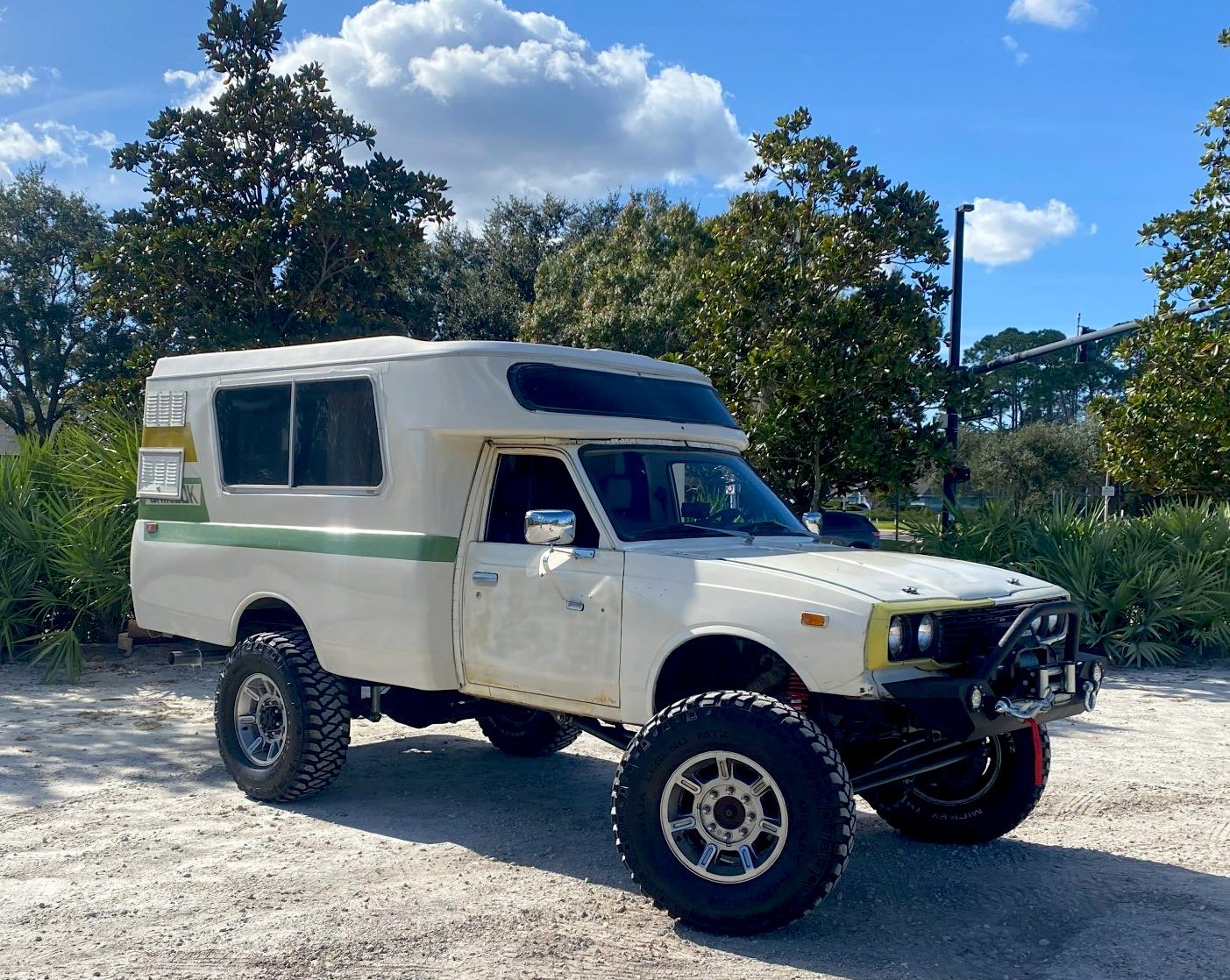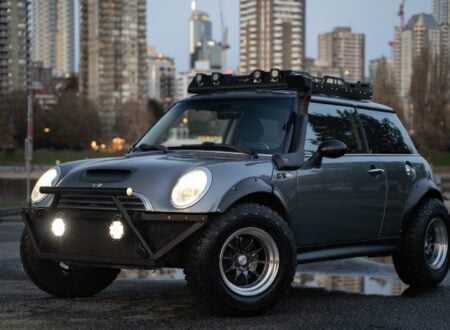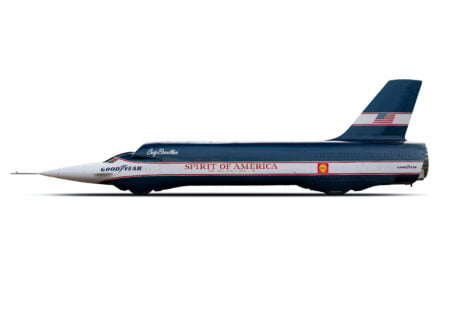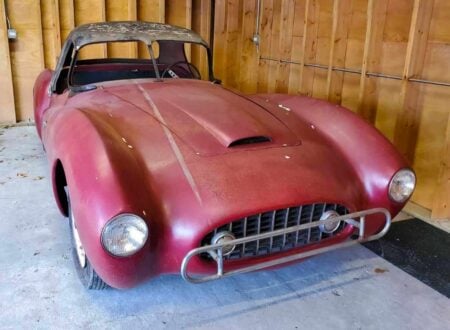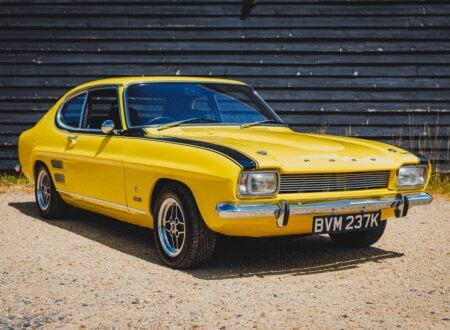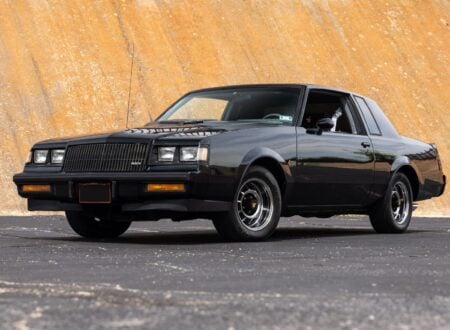This is a 1973 Toyota Hilux Chinook that’s been converted into a retro pop-up camper with a four-wheel drive conversion, a 5.3 liter Vortec V8, a dual range transfer case, and accommodation for two with a kitchenette.
As far as off-road campers go, this is one of the most capable we’ve ever featured on Silodrome. It’s also one of the most memorable, thanks in no small part to the retro styling, hefty 33″ Mickey Thompson Baja Legend MTZ tires, and lifted suspension.
Fast Facts – The Toyota Hilux Chinook Camper
- Chinook was founded in 1938 by Sy and Rose Mair in Orange County, California. This makes it one of the oldest brand names in the American RV industry. The company worked with a number of vehicle manufacturers over the years, but are best known today for their close partnership with Toyota back in the 1970s.
- The Toyota Chinook was originally marketed as the world’s first “micro mini-motorhome.” It was released in 1973 as a joint-project between Toyota Motor Sales, U.S.A., Inc. and Chinook International – with camper manufacturing happening at the La Verne, California Chinook plant.
- The vehicle was based on the Toyota Hilux cab and chassis, originally a rear-wheel drive only mini-pickup truck introduced into the US market in 1968 as a competitor for the Datsun Truck. The Chinook camper would be added to the rear, creating an affordable and comparatively fuel efficient RV.
- The Toyota Hilux Chinook pop-up camper you see here is by far the most powerful and off road capable example we’ve yet seen. It’s been given a four-wheel drive conversion, FOA coilovers, a Badland winch, 33″ tires, and it’s powered by a 5.3 liter Vortec V8. It’s now being offered for sale out of Union Park, Florida.
The World’s First “Micro Mini-Motorhome”
The Chinook Mobilodge Company, an American manufacturer known for their RVs and motorhomes, was one of the first to recognize the potential of the Toyota Hilux, long before it became a byword for toughness and reliability. In the early-to-mid-1970s Chinook designed a camper to fit on the back of the Hilux, they dubbed it the world’s first “micro mini-motorhome,” and it was offered at a price point far below your average (much larger) American RV.
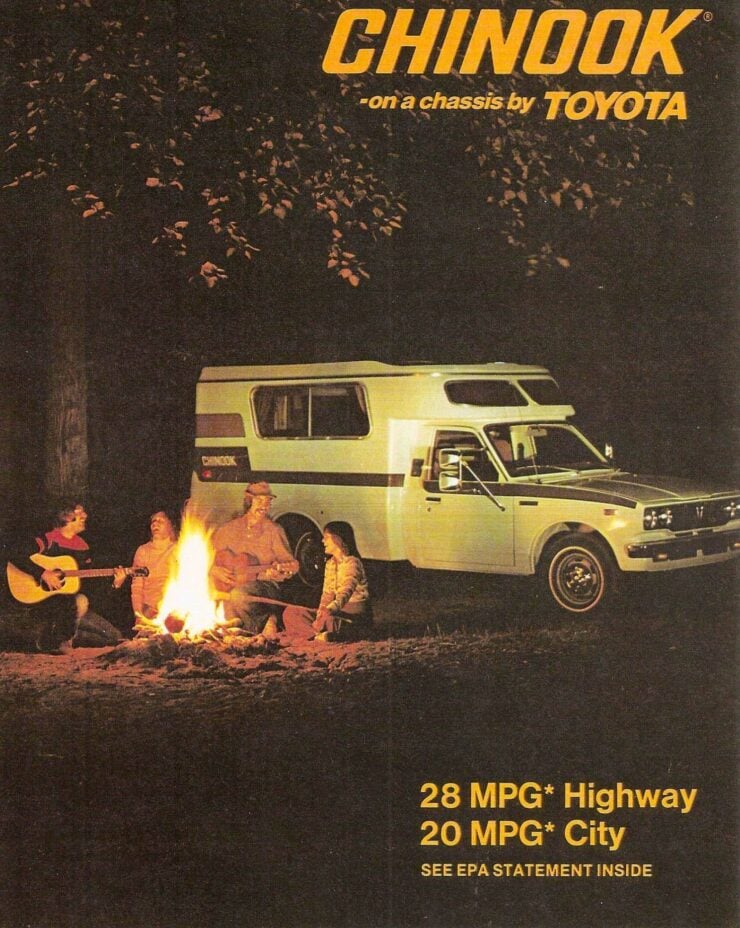

By 1973, Toyota and Chinook signed an agreement, committing to jointly produce and market these new campers in the US. Under the deal, a Chinook subsidiary would manufacture the compact motorhome using a modified Toyota Hilux cab and chassis. This collaboration was set for exclusive sale through Toyota dealerships, a first for the Japanese automaker.
The joint project aimed to produce a upwards of 4,000 units in the first year, but both companies projected production could reach up to 10,000 units annually.
Production began in 1973 at Chinook’s plant in La Verne, California. The vehicles were initially sold in the western US, but plans were in place to expand distribution further. The mini-motorhomes combined fuel efficiency with more car-like handling than their 4×4 counterparts, making them popular, especially among Southern California’s outdoor enthusiasts.
Some initial models had flaws, prompting refinements in subsequent production models – by 1975, the vehicles saw improvements like a stronger steel-reinforced frame, a frame-mounted step bumper, and the larger and more powerful 20R engine. These updates made the vehicle more durable and improved its performance on roads, answering many of the complaints from the earlier specification Toyota Chinooks.
Despite its popularity, some issues were reported, especially concerning the rear axle and suspension. Some have claimed that these complaints may have stemmed from owners overloading the vehicles, but Toyota still strengthened the chassis and suspension specifically to address the concerns.
By 1978, the collaboration term with Toyota concluded, and Chinook began selling their models through both Toyota and independent RV dealerships. Although 1978 marked the end of the Toyota-Chinook production run, some units, built on the 1978 chassis, were sold as 1979 models.
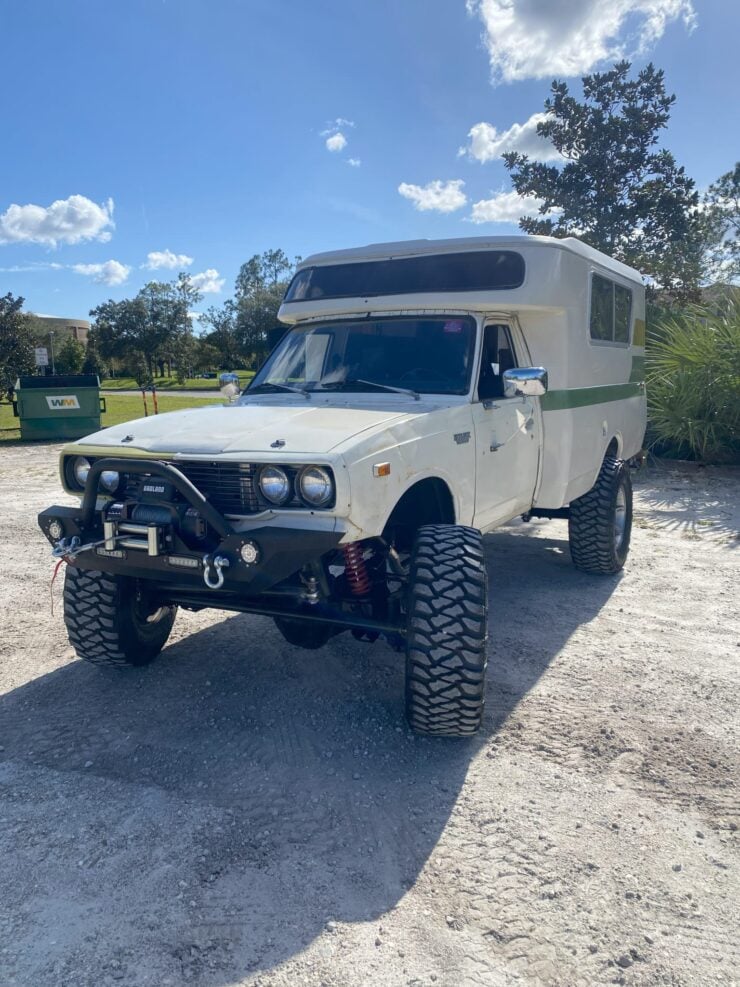

The surviving examples of the Toyota Chinook are now sought after by enthusiasts, though relatively few survived a period of decades when their worth was considered low. Many died slow deaths in junkyards or were essentially left to rust away in backyards and empty lots. Those that did make it now offer an affordable and decidedly retro camping option for a new generation of explorers.
The Toyota Hilux 4×4 Chinook Camper Shown Here
The vehicle you see here started lift as a relatively standard 1973 Toyota Hilux Chinook, with rear wheel drive and regular road suspension. Back in 2022 it was bought by the current owner (and now seller) who undertook a comprehensive drivetrain and running gear rebuild, turning it into an off-road capable home-on-wheels for two.
The first order of business was to convert it to four-wheel drive, this included the fitment of a AAM 9.5″ front axle with a limited-slip differential and FOA coilovers. Above this a 5.3 liter Vortec V8 was fitted, this engine now has an aftermarket camshaft, hydraulic lifters, Michigan Motorsports pushrods, and a trunnion upgrade kit.
Power is sent back through a built 4-speed 4L60E automatic transmission and a NP241C dual-range transfer case. The rear axle is a Dana 70 unit with a limited-slip differential that is attached to the vehicle with rear leaf springs and a spring-over-axle kit with lift blocks.
The vehicle now rides on 17″ alloy wheels from a Hummer H2 with 33″ 315/70 Mickey Thompson Baja Legend MTZ tires, and it’s fitted with a steel front bumper with LED auxiliary lights, D-ring shackles, and a Badland winch.
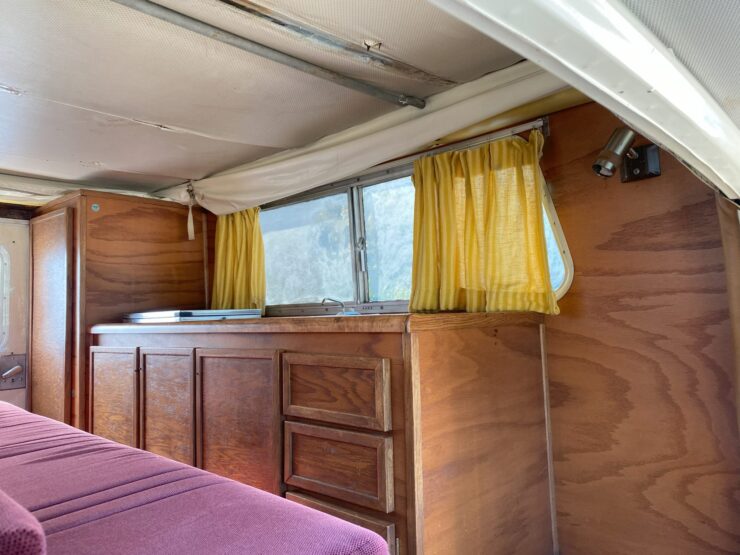

Inside the camper section you’ll find a folding sofa that converts into a double bed, a kitchenette with a sink and running water, a two-burner propane cooktop, a Dometic refrigerator, and plenty of cabinet and counter space.
The vehicle is now being offered for sale out of Union Park, Florida on Bring a Trailer with a Florida title in the seller’s name. You can visit the listing here if you’d like to read more about it or place a bid.
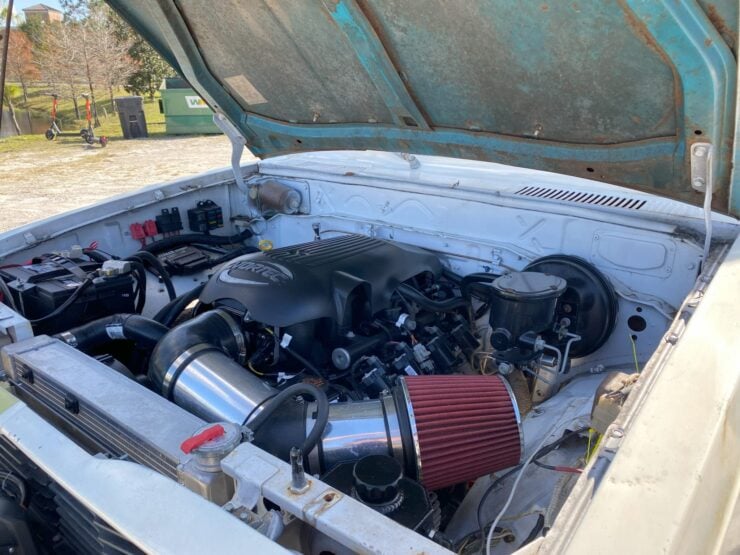
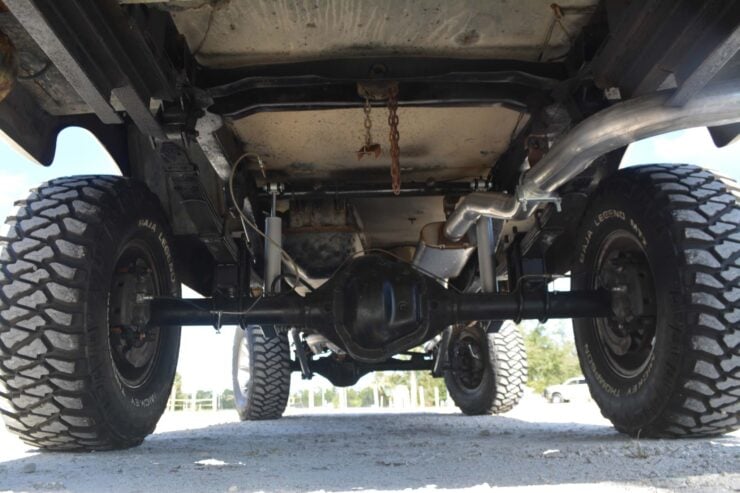
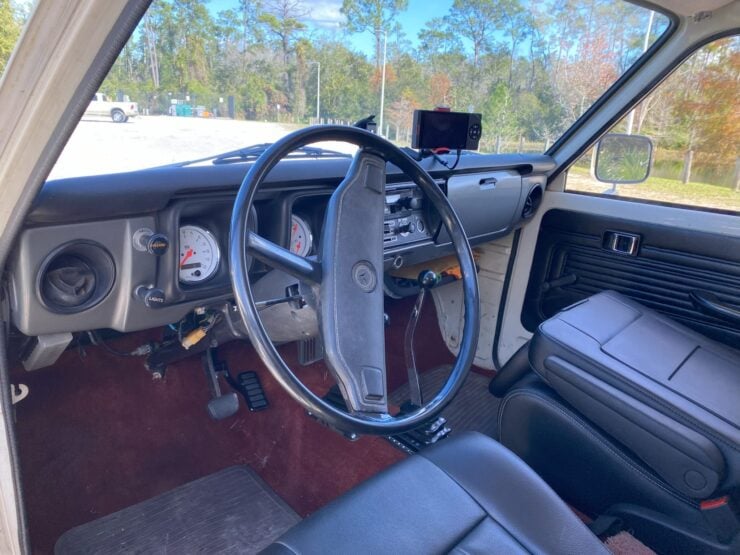
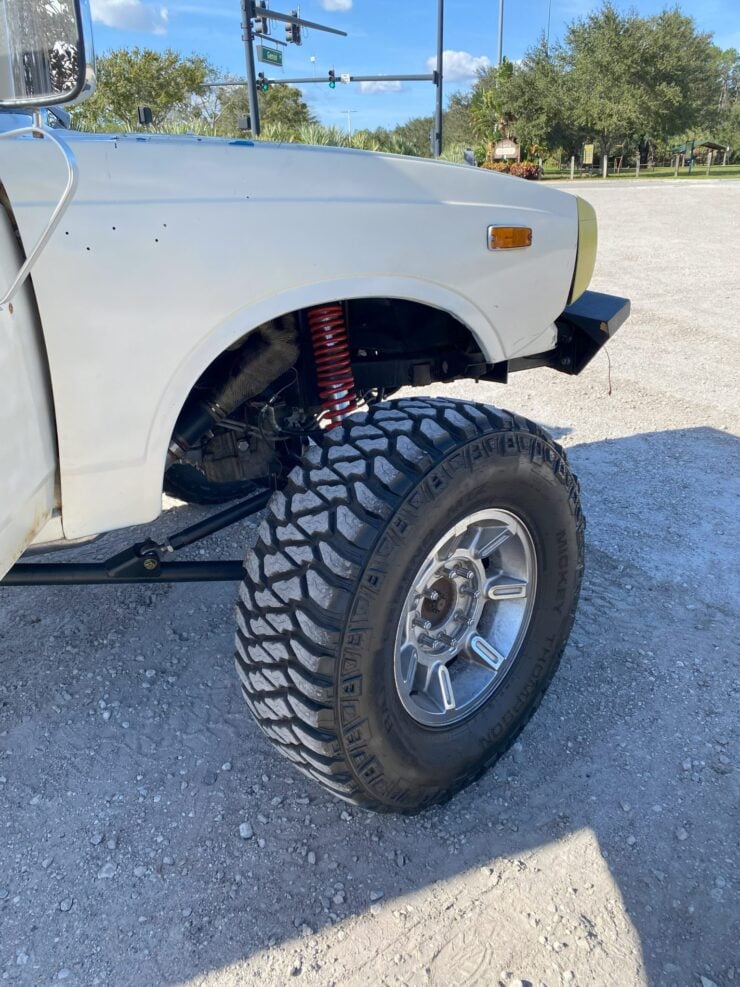
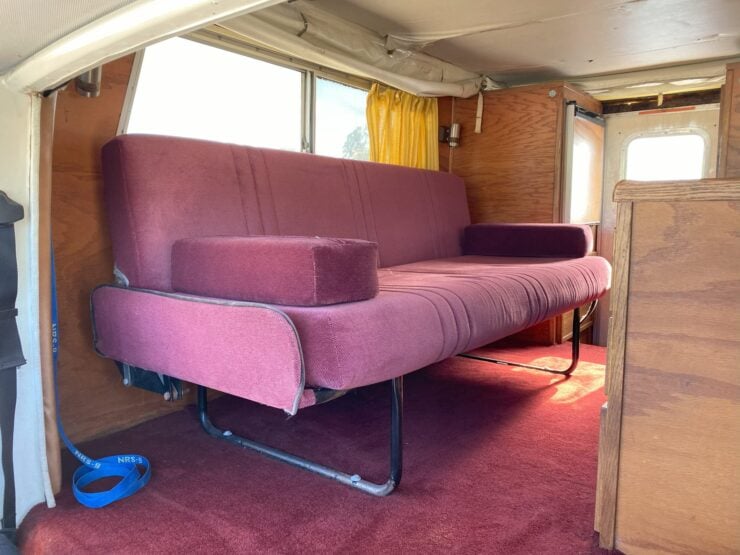
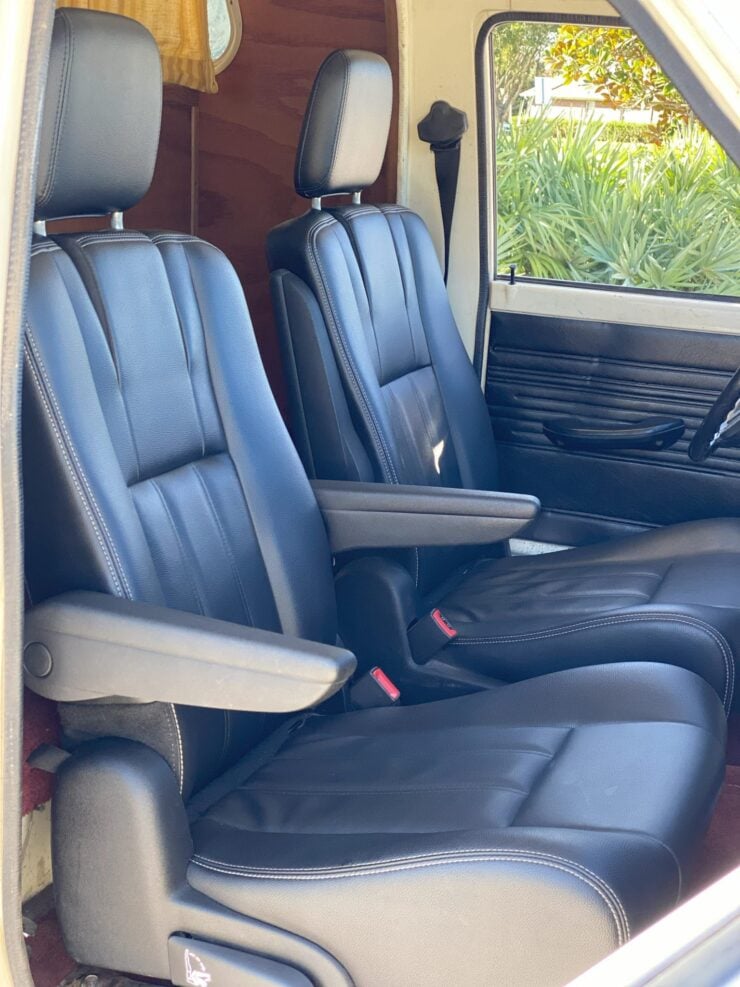


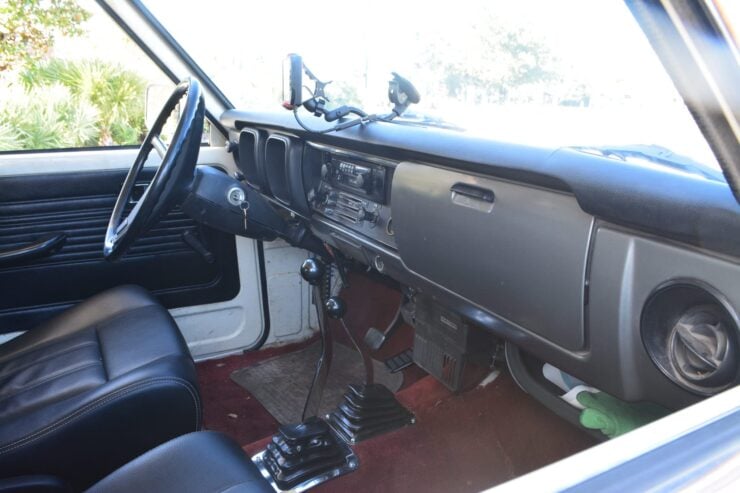
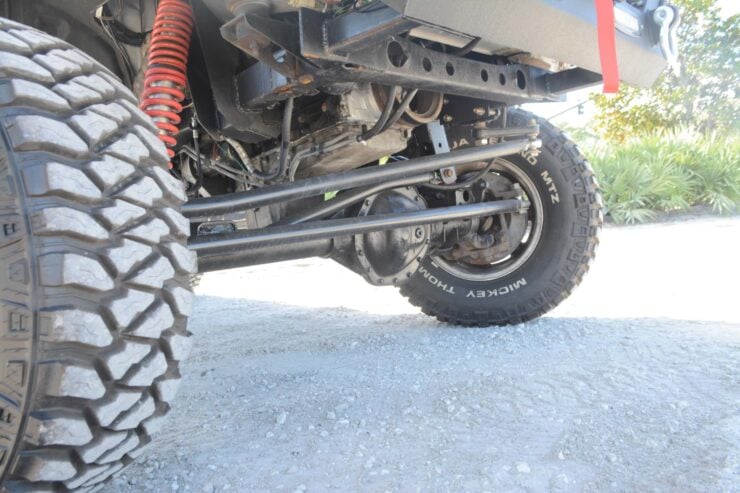

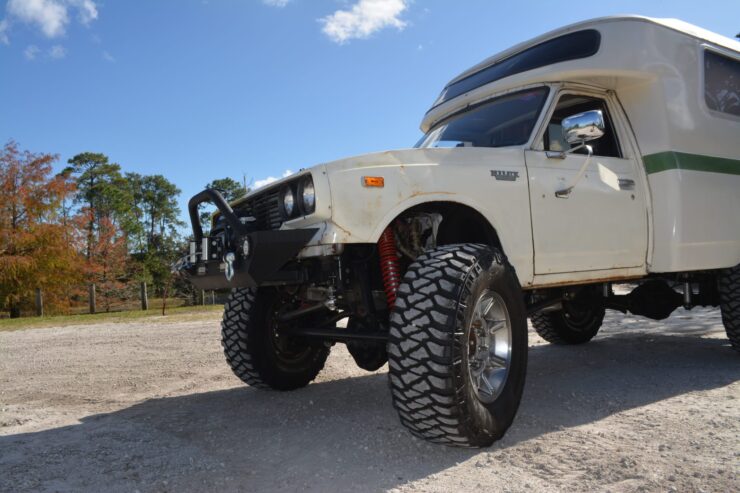
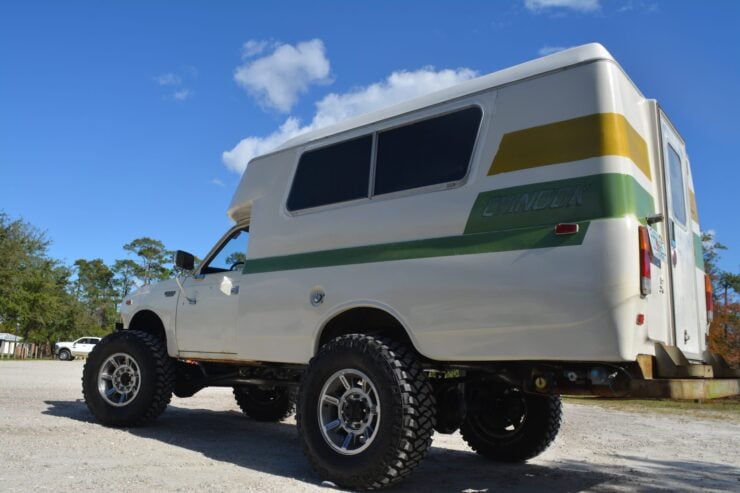
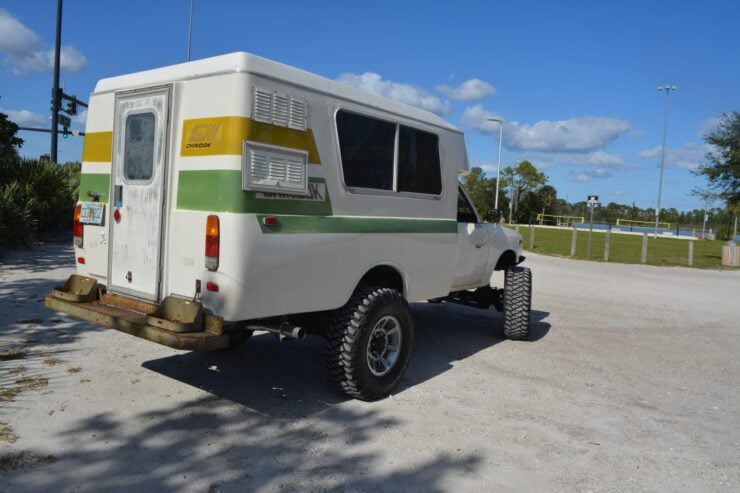
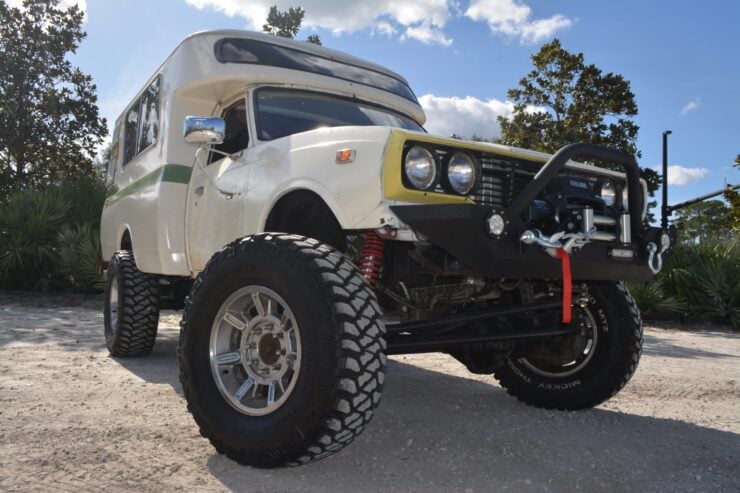
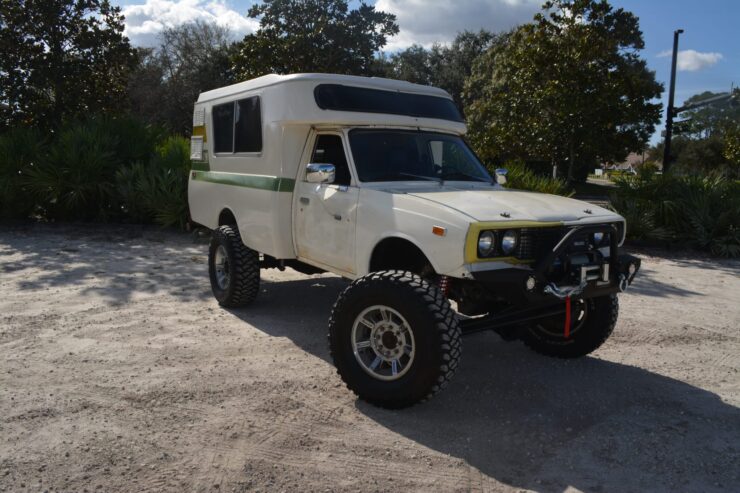
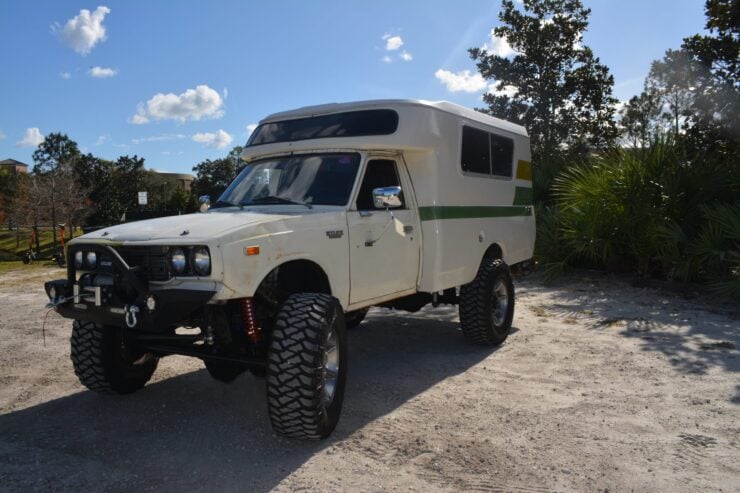

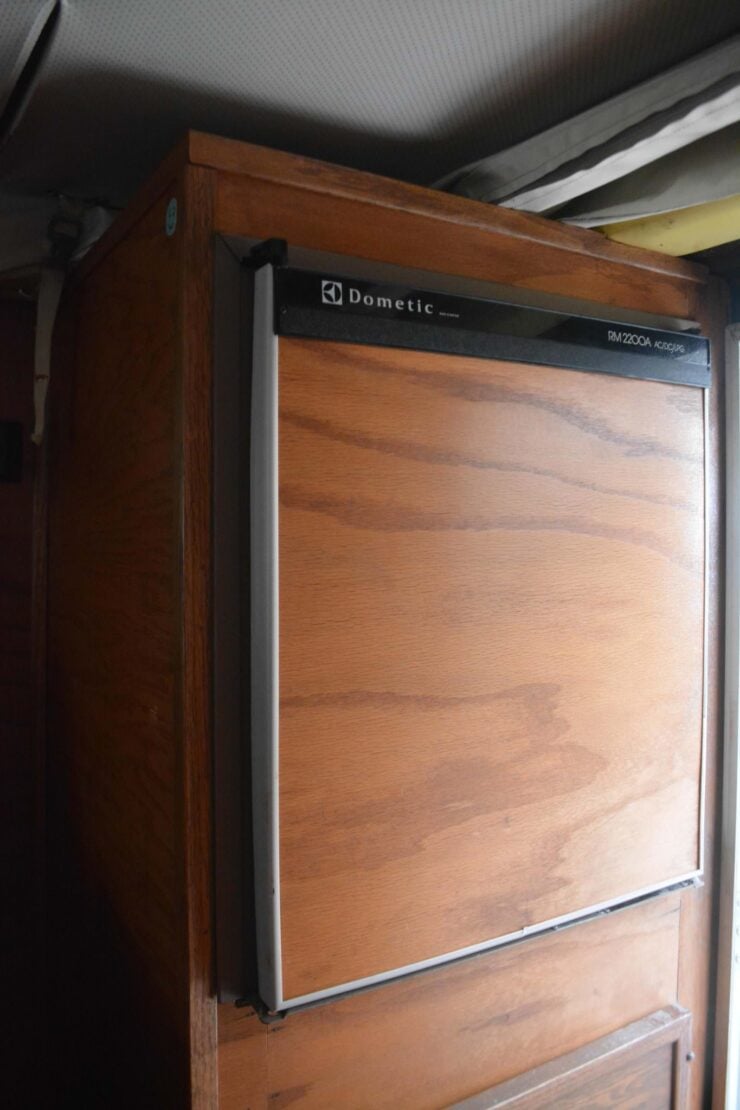
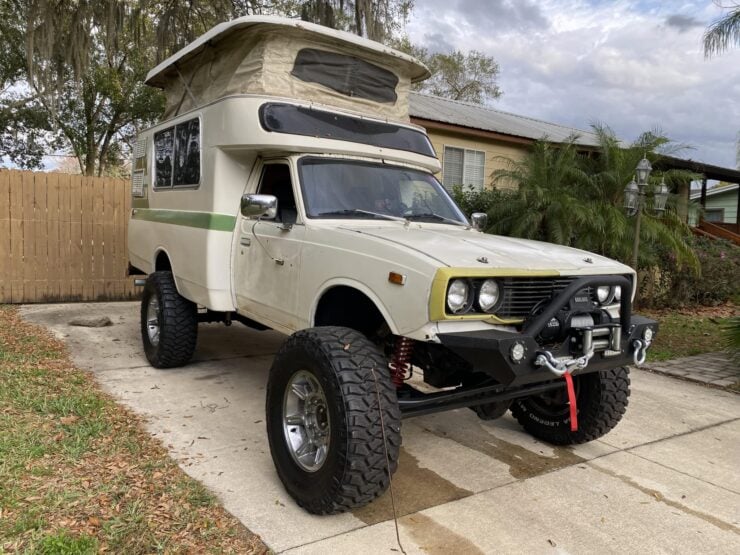
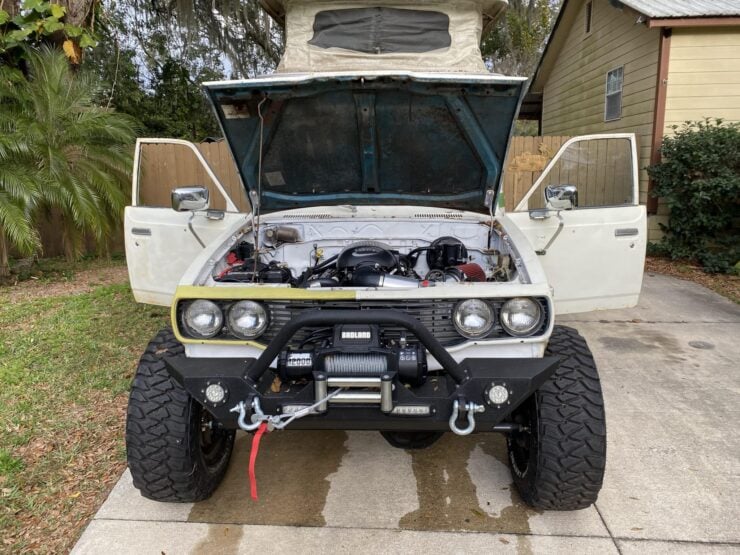
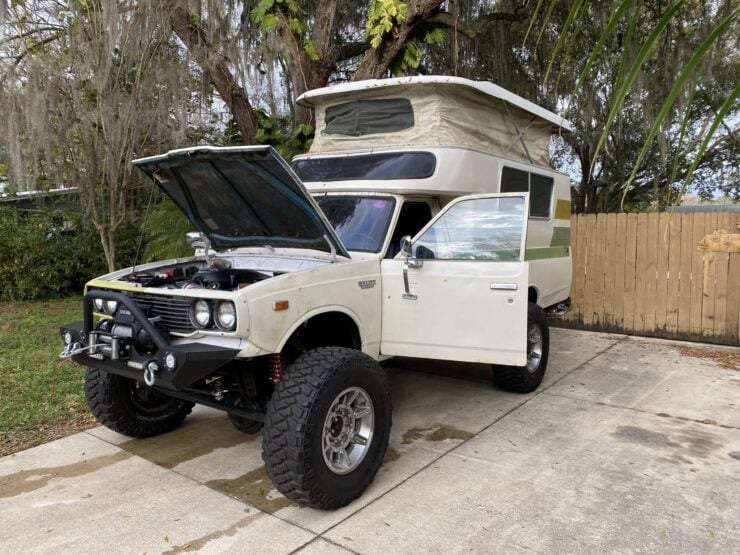
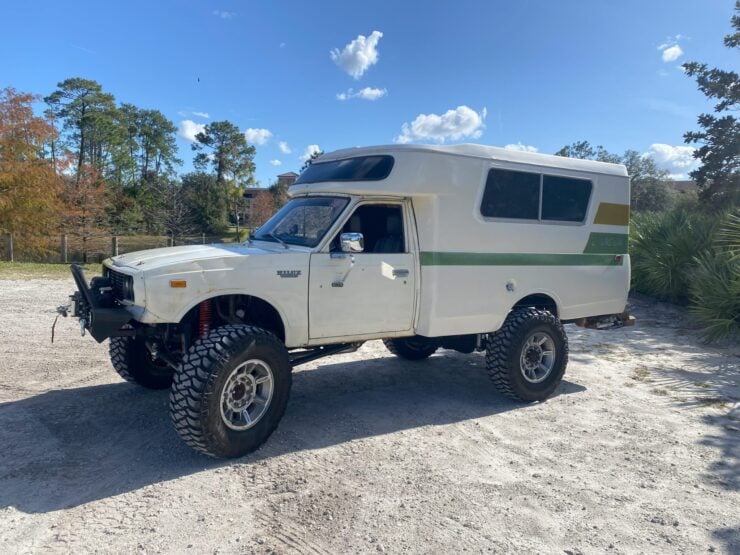
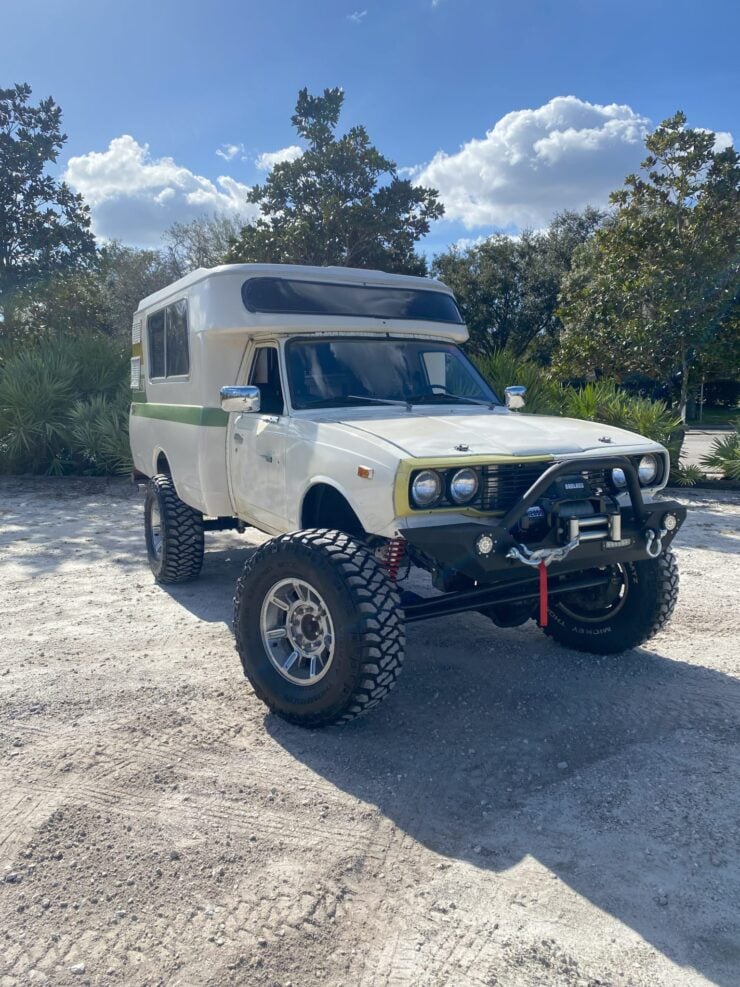
Images courtesy of Bring a Trailer

